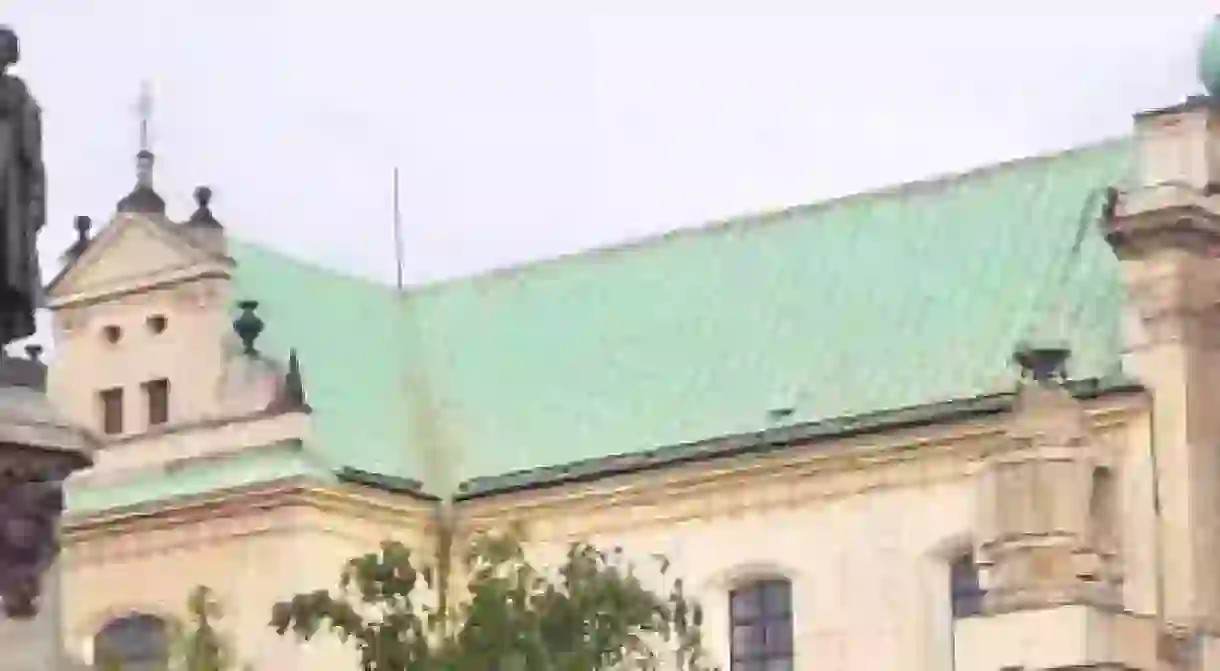Most Beautiful Churches in Warsaw

Poland was christened in the Catholic faith in 966 by the decision of the ruler Mieszko I from the Piast dynasty, the father of Poland’s first king. Nowadays, its dominating religion is still Catholicism. If you are looking to explore Poland’s past, you will inevitably cross the threshold of many churches that accompany other important sites. Here is a list of the most beautiful ones in Warsaw, Poland’s capital.

Holy Cross Basilica
Church

The church that you are most likely to simply walk into whilst sightseeing in Warsaw‘s most interesting part, Krakowskie Przedmieście street that constitutes a part of the Royal Route, is the Holy Cross Basilica. Located a few meters away from the astonishing Polish Academy of Science and Copernicus’ monument on the one side, and the main campus of Warsaw University on the other side, it dates back to the 15th century. What we can see nowadays is an effect of a 17th-century restoration in a Baroque style conducted by the royal architect Jakub Bellotti. This church played an important role in Poland’s history, notably the January Uprising of 1863 and the Warsaw Uprising of 1944. It is also here that the last Polish King forged the Order of the Knights of St Stanislaus. But what will be the highlight of your visit to the Holy Cross Basilica is Frederic Chopin‘s heart that has been resting here since 1882.
Church of the Assumption of the Virgin Mary and of St. Joseph
Church

This church is also linked to the great Polish composer Chopin, for it is here that he performed his first recital on the church’s organ. The Church of the Assumption of the Virgin Mary and of St. Joseph, more commonly known as the Carmelite Church, is located on Krakowskie Przedmieście street as well, just next to the Presidential Palace and Adam Mickiewicz‘s monument, and not too far from the beautiful old town and its Royal Castle. It amazes with the 18th-century neoclassical facade, the rococo main altar, and the interior paintings created by two Polish leading artists of the time, Smuglewicz and Czechowicz.
St Anne's Church
Church, Building

St Anne’s Church is the Catholic center of the student community of Warsaw. It is one of the prime examples of Poland‘s neoclassical architecture, primarily due to its astonishing facade, unchanged since 1788. The church is located on Krakowskie Przedmieście street and near Warsaw’s old town, just next to the famous Castle Square.
The Archicatedral Basilica of St John the Baptist
Church

Warsaw‘s historical basilica is located in the old town and played an extremely important role in the country’s cultural and political development. This church dates back to the 13th century, when it was a modest, wooden construction. Soon, however, the iconic priest Piotr Skarga would preach within its walls, and a few of Polish kings were coronated and buried here too.
St Alexander's Church
Church

If you walk along the Royal Route towards the Łazienki Royal Park, you will pass by the Three Crosses Square. The square is dominated by Warsaw’s counterpart of the ancient Roman Pantheon – St Alexander’s Church – that was indeed modeled after it. It is known for providing a secret meeting place during World War II. It was built in the first half of the 18th century, during the dark times of the Russian, Prussian and Austrian occupation of the Polish territory, and in order to commemorate the Russian tsar Alexander I. The initial neoclassical architecture was later on modified in a neo-Renaissance style, but after the church had been destroyed during World War II, it was rebuilt in its original, neoclassical style.
St Augustine's Church
Church, Museum, Theater

Although relatively modern, this late 19th-century church witnessed all the tragic events of the Nazi destruction of Poland. During the wartime, it was located in the ghetto but miraculously survived through the devastation of the quarter. In the 1940s it functioned as a secret theater in the ghetto, then as a magazine where the belongings stolen from the Jews were brought back, and eventually as an observation deck during the 1944 Warsaw Uprising.













